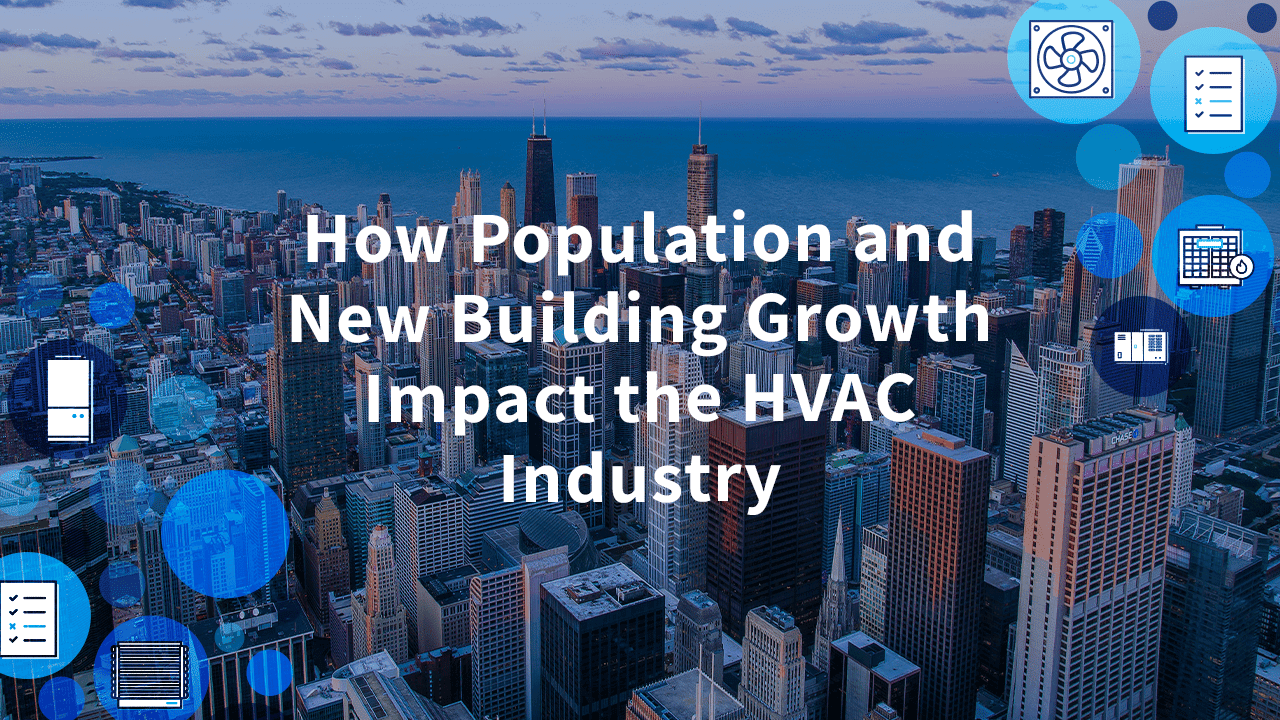The HVAC market is booming for a variety of reasons. According to the Global HVAC Market Report and Forecast 2022-2027, the HVAC market was valued at $198 billion in 2021, but it’s only expected to grow in the coming years. Thanks in part to a growing demand for energy-efficient HVAC systems, the market is projected to grow at a rate exceeding 5% from 2022 to 2027, reaching a value of about $279 billion by 2027.
According to ResearchAndMarkets.com, which issued the report, the HVAC market growth also is driven by factors including a growing population, improved living standards, and rapid urbanization. The HVAC market expansion also is impacted by increased construction activities and the development of energy-efficient buildings.
What’s Driving Momentum in the HVAC Industry?
The increased demand for HVAC services has been the focus of additional studies. According to a report from BIS Research, multiple factors are driving the momentum of the global HVAC market, including:
- Rising temperatures resulting from climate change have led to an increase in demand for HVAC products.
- Construction booms in certain regions continue to drive growth in the HVAC industry.
- The presence of industry leaders has significantly contributed to the HVAC market growth.
The report cited the dynamic nature of the HVAC industry, which can evolve from rapid growth to periods of stagnation and then renewed momentum. This dynamic nature primarily can be attributed to increased urbanization, unprecedented population growth and frequently changing governmental regulations. In fact, an increased worldwide urban population is responsible for an increased demand for HVAC products, which is a major driver in the HVAC market.
New Construction and the Housing Crisis
How does the current housing crisis and construction boom impact the HVAC industry? It’s hard to understand a housing shortage in a market boasting more than 1.5 million housing starts units each month. Not only are housing starts booming, but there are no signs of a construction slowdown on the horizon.
Yet compared to the rate of population growth, the demand for housing promises to exceed the availability of homes for some time to come. In fact, home construction has failed to keep pace with population growth for the past 20 years, according to information from the U.S. Census Bureau. For example, last year 912,000 single-family homes were built in the United States, while the U.S. population grew by more than 3 million people.
The demand for new construction carries with it an increased demand for HVAC products to accommodate all the new housing, while HVAC professionals still are needed to provide HVAC parts and services to existing homes. After all, new construction and HVAC systems go hand-in-hand since there’s no doubt that an HVAC system will be required in a new home.
The demand for HVAC is so high, in fact, that it often outpaces the availability of HVAC technicians to complete it, not to mention the supply of HVAC equipment available to meet the demand. It’s not uncommon for an HVAC customer to face a delay in getting their new equipment or repairs.
Population Growth in U.S. Regions
While the construction boom and accompanying increase for HVAC products and services is affecting the entire United States, some regions are experiencing great rates of growth than others. According to the U.S. Census Bureau, the fastest-growing states are currently Arizona and Idaho, while the most significant population growth by region occurred in the South and the West, Still, other states, including California, Connecticut, and Illinois, saw population losses in recent years. Regardless, California still boasts the largest number of housing units with 14.5 million.
Of course, not all regions have the same HVAC demands as others. It’s no wonder the three states that employ the most HVAC workers – Florida, California, and Texas – all experience warmer temperatures. As climate change continues to drive the need for indoor comfort in those areas, it will only continue to drive the demand for HVAC services all the higher. Of course, the high demand for HVAC isn’t limited to specific regions. According to Projections Central, at least 20 states will see an increased need for HVAC positions by 2028, including Utah, Colorado, and Nevada.












